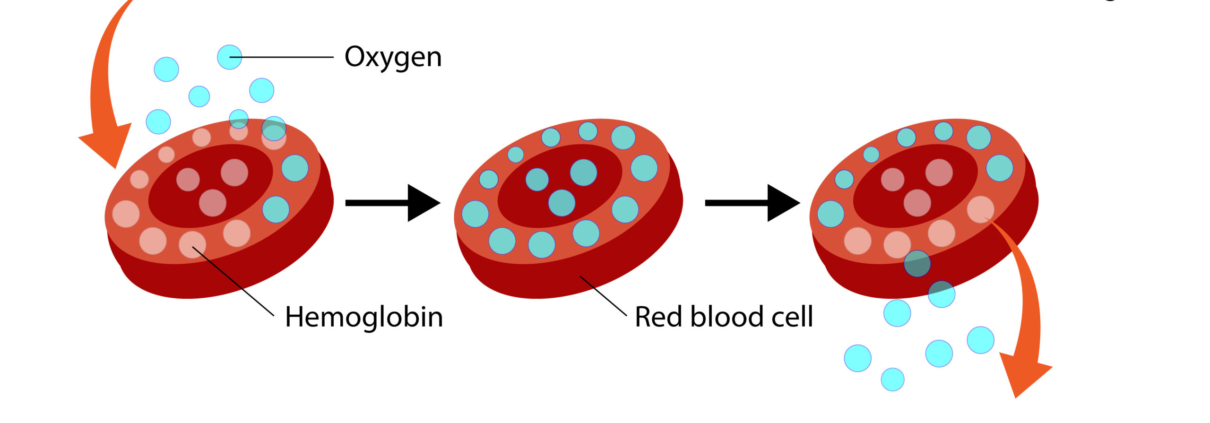Is There a Device to Measure Blood Oxygen?
Is There a Device to Measure Blood Oxygen? A Comprehensive Guide
In today’s health-conscious world, monitoring vital signs has become a paramount concern for many. Among these vital signs, blood oxygen levels emerge as a crucial indicator of our respiratory and overall health. Consequently, this leads to a pressing question that many health enthusiasts and patients alike find themselves asking: “Is there a device to measure blood oxygen?” Fortunately, the answer is a resounding yes. Moreover, this comprehensive guide will introduce you to the wonders of pulse oximetry, the technology behind these life-saving gadgets, providing an insightful exploration into how they work and their significance in our daily lives
What is Pulse Oximetry?
Pulse oximetry is a non-invasive method used to measure the oxygen saturation level of the blood. Importantly, this technology offers the convenience of real-time monitoring without the need for cumbersome blood samples. So, how does it work? Simply put, a pulse oximeter utilizes light beams to estimate the oxygen saturation in your blood and your pulse rate. Specifically, the device typically clips onto a part of the body, often a finger, toe, or earlobe. It then uses red and infrared light to measure how much oxygen is in your blood based on how the light passes through your finger. This approach allows for an efficient and painless way to monitor vital health indicators.
The Importance of Monitoring Blood Oxygen Levels
Monitoring blood oxygen levels can be vital for individuals with respiratory or cardiovascular conditions, athletes, and anyone interested in maintaining optimal health. Generally, normal blood oxygen saturation levels usually range from 95% to 100%. Consequently, values below 95% may indicate a need for medical evaluation, as insufficient oxygenation can lead to severe health issues. Specifically, this situation could result in hypoxemia, which demands prompt medical attention to prevent further complications.
Types of Pulse Oximeters
- Fingertip Pulse Oximeters: These portable devices are the most common and are widely used at home for personal monitoring. They are compact, easy to use, and provide quick readings.
- Handheld Pulse Oximeters: Often found in medical settings, these devices come with a probe that is attached to the patient, offering more detailed monitoring capabilities.
- Wearable Pulse Oximeters: Designed for continuous monitoring, these oximeters can be worn on the wrist and are ideal for patients needing constant observation without hospitalization.

How to Use a Pulse Oximeter
Using a pulse oximeter is straightforward:
- Turn on the device and place it on your finger, toe, or earlobe.
- Wait a few seconds for the device to calculate the reading.
- Read the display, which will show your oxygen saturation level (SpO2) and pulse rate.
Choosing the Right Pulse Oximeter
When selecting a pulse oximeter, consider the following:
- Accuracy: Look for devices with an accuracy of ±2% for SpO2 readings.
- Ease of Use: The device should be user-friendly, with a clear display and simple operation.
- Durability and Portability: Choose a robust device if you plan to carry it frequently.
- Price: Prices vary, so select one that fits your needs and budget.
Conclusion: Empowering Health with Technology
In answering the question, “Is there a device to measure blood oxygen?” we’ve uncovered the critical role pulse oximeters play in health monitoring. Importantly, whether for personal health management, athletic performance, or medical needs, these devices offer an easy and efficient way to keep a close eye on your vital signs. It’s essential to remember, while pulse oximeters provide valuable insights, they are not substitutes for professional medical advice. Therefore, always consult with a healthcare provider for concerns about your health and well-being.
Moreover, as technology continues to evolve, the integration of such devices into our daily lives emphasizes the importance of staying informed and proactive about our health. By understanding and utilizing tools like pulse oximeters, we significantly empower ourselves to lead healthier, more informed lives. This proactive approach not only enhances our ability to monitor our health but also encourages a culture of wellness and informed decision-making.
Check out the latest pulse oximeters to find the device that best suits your needs, and take a step today towards a healthier tomorrow.
External resources:
- American Lung Association. Provides a wealth of information on how blood oxygen levels affect lung health and offers guidance on managing respiratory conditions. Visit their website at American Lung Association.
- Mayo Clinic. Offers detailed insights into the importance of monitoring your blood oxygen levels and how it can signal various health conditions. Explore more at Mayo Clinic.
- Consumer Reports. For those in the market for a pulse oximeter, Consumer Reports offers unbiased reviews and buying guides to help you choose the right product. Check their recommendations at Consumer Reports.
- National Institutes of Health (NIH). Provides scientific articles and research studies on pulse oximetry, explaining the technology, its applications, and its limitations. Read their publications at NIH.
- Centers for Disease Control and Prevention (CDC). Offers guidelines and educational materials on preventing respiratory illnesses and how monitoring blood oxygen levels can be a critical part of managing health. Visit CDC for more information.
Disclaimer
The information, including but not limited to, text, graphics, images and other material contained on this website are for informational purposes only. The purpose of this website is to promote broad consumer understanding and knowledge of various health topics. It is not intended to be a substitute for professional medical advice, diagnosis or treatment. Always seek the advice of your physician or another qualified healthcare provider with any questions you may have regarding a medical condition or treatment and before undertaking a new health care regimen, and never disregard professional medical advice or delay in seeking it because of something you have read on this website.
Overcoming Anxiety in pregnancy after previous miscarriages
Pregnancy should be a time of anticipation and joy, but for those who have experienced the heartbreak of miscarriages, it can also bring a shadow of anxiety and fear. If you’ve faced such losses, you’re not alone, and there are ways to navigate through this complex emotional landscape towards a place of hope and resilience.
Understanding Anxiety in Pregnancy
Anxiety during pregnancy, especially after previous miscarriages, is a natural response. It stems from the fear of the unknown and the desire to protect oneself from further emotional pain. However, it’s crucial to address this anxiety because it can affect both your well-being and that of your developing baby.
Strategies for Managing Anxiety
Seek Professional Support
One of the most effective steps you can take is to seek support from a healthcare provider who understands the nuances of pregnancy after loss. A therapist specializing in prenatal mental health can offer strategies tailored to your needs.
Build a Support Network
Surround yourself with people who understand what you’re going through. Support groups, both in-person and online, can connect you with others who share your experiences and fears.
Focus on What You Can Control
Focus on maintaining a healthy lifestyle, attending all prenatal appointments, and following your healthcare provider’s advice. Engaging in prenatal yoga or meditation can also help manage stress levels.
Educate Yourself
Understanding the facts about pregnancy after miscarriage can empower you. However, balance is key; too much information can sometimes increase anxiety.
Allow Yourself to Grieve and Heal
Recognize that it’s okay to grieve your losses even as you hope for the future. Acknowledging these emotions is a vital step toward healing.
Create a Plan with Your Healthcare Provider
Work with your healthcare provider to create a plan that addresses your concerns and outlines the steps to take should you encounter any issues during your pregnancy.
Practice Mindfulness and Relaxation Techniques
Mindfulness and relaxation techniques can be particularly beneficial in managing anxiety. Practices such as guided imagery, deep breathing exercises, and progressive muscle relaxation can help ground your thoughts in the present, reducing feelings of anxiety.
Supporting Data and External Links
- According to the American Pregnancy Association, mindfulness and relaxation techniques can significantly reduce stress and anxiety during pregnancy.
- The Miscarriage Association provides resources and support for those who have experienced loss, offering a community where your feelings are validated and understood.

Conclusion
Experiencing anxiety during pregnancy after miscarriages is a journey filled with mixed emotions. Yet, by employing strategies to manage anxiety, seeking support, and focusing on your well-being, you can navigate this path with greater peace and confidence. Remember, it’s okay to seek help, and it’s important to take care of yourself both physically and emotionally. Your feelings are valid, and there’s hope for a joyful outcome.
Let’s embrace this journey together, sharing stories of resilience and hope. If you’ve found particular strategies helpful, or if you have questions or concerns, please share them in the comments below. Your story can be a beacon of hope for others walking this path.
For further reading and resources, visit the American Pregnancy Association and The Miscarriage Association websites. These platforms offer valuable information and support networks to help you through this time.
Remember, you’re not alone on this journey. Together, we can navigate the complexities of pregnancy after loss, finding strength and hope in each other’s stories.
- American Pregnancy Association (Visit Here): Offers comprehensive information on pregnancy, including managing stress and anxiety during pregnancy, and provides resources for those who have experienced miscarriages.
- The Miscarriage Association (Visit Here): Provides support and information to anyone affected by miscarriage, ectopic pregnancy, or molar pregnancy. They offer resources that help individuals cope with grief and plan for future pregnancies.
Disclaimer
The information, including but not limited to, text, graphics, images and other material contained on this website are for informational purposes only. The purpose of this website is to promote broad consumer understanding and knowledge of various health topics. It is not intended to be a substitute for professional medical advice, diagnosis or treatment. Always seek the advice of your physician or another qualified healthcare provider with any questions you may have regarding a medical condition or treatment and before undertaking a new health care regimen, and never disregard professional medical advice or delay in seeking it because of something you have read on this website.
Blood Oxygen Level; all you need to know:
What is Blood Oxygen Level?
Blood oxygen level measures the oxygen circulating in your blood. Red blood cells transport oxygen from the lungs to the body’s parts, indicating how effectively the body moves oxygen from the lungs to the cells. This level is crucial for health.
Measuring Your Blood Oxygen Level
You can measure your blood oxygen level in two ways: through an arterial blood gas test or a pulse oximeter. The arterial blood gas test, a blood test, accurately measures your blood’s oxygen level and checks your blood’s pH balance. Although accurate, this test is invasive. On the other hand, a pulse oximeter offers a noninvasive estimate by sending infrared light into capillaries in your finger, toe, or earlobe and measuring the reflected light. This method provides a reading of your blood’s oxygen saturation (SpO2 level) but has a 2 percent error margin. Despite being slightly less precise, doctors prefer it for its convenience in offering quick readings.
How Blood Becomes Oxygenated
Oxygen saturation in blood starts in the lungs’ alveoli, tiny air sacs responsible for exchanging oxygen and carbon dioxide molecules with the bloodstream. The Oxygen binds to hemoglobin in the blood, which then delivers oxygen to tissues while carrying carbon dioxide back to the lungs. Ideally, oxygen levels in your blood depend on several factors, including the amount of inhaled oxygen, alveoli efficiency, hemoglobin concentration in red blood cells, and hemoglobin’s oxygen attraction. Usually, hemoglobin carries enough oxygen for the body’s needs, but certain diseases can impair its ability to bind oxygen.
Low Blood Oxygen Levels
An oxygen saturation level below 95% is generally abnormal, and below 90% signals an emergency requiring oxygen therapy. The brain, highly sensitive to hypoxia, can suffer cell death within five minutes of oxygen deprivation, leading to serious outcomes like coma, seizures, and brain death if prolonged. Identifying and addressing the cause of low oxygen saturation is crucial. Conditions like COPD and asthma typically result from inadequate air exchange in the lungs and alveoli. Treatments may include oxygen therapy, steroids, or bronchodilators to open the airways.
Treatment
For low blood oxygen levels, treatment options include supplemental oxygen, available in-office or for home use, though some devices require a prescription. Lifestyle changes, like a healthy diet, can also improve oxygen levels and overall health. Since iron deficiency often leads to low oxygen saturation, consuming iron-rich foods such as meat, fish, kidney beans, lentils, and cashew nuts is beneficial.
Disclaimer
This information aims to enhance understanding and knowledge of health topics and is for informational purposes only. It is not a substitute for professional medical advice, diagnosis, or treatment. Always consult your physician or another qualified healthcare provider with any questions about a medical condition or treatment. Do not disregard professional medical advice or delay seeking it based on what you have read on this website.
References:
A Guide to Healthy Living for Seniors
What is Healthy Living for Seniors
As you grow older, you go through many changes, and you may need to adjust your lifestyle for healthy aging. Our minds and bodies undergo a wide variety of mental, emotional, and physical changes. While some aspects of life may become more difficult, active living for older adults is still well within reach. In this guide to healthy living for seniors, we’ll explore the many ways you can live a full, satisfying life well into your golden years. Healthy eating and regular physical activity can be keys to good health at any age. Making suitable lifestyle choices may also prevent some health problems, such as diabetes, heart disease, and some cancers.
What foods should seniors avoid?
Food plays a central role in all of our lives. Eating is both a way to sustain ourselves and an important part of our culture. People often mark major life events with a large feast from wedding cakes to birthday cakes, beautiful holiday spreads with family to casual lunches with friends. As adults age, they need fewer total calories, but higher amounts of some nutrients, especially calcium and vitamin D. In terms of nutrition, you need to focus on quality, not quantity. For both optimal physical and mental health, older adults truly need to make every calorie count.
Here are foods that you should cut down on (or avoid eating altogether) as you get older, and why:
- Raw or undercooked eggs, meat, and poultry.
Undercooked foods such as eggs, meat, poultry, and sushi can cause food poisoning, which can trigger sepsis and septic shock. Although anyone can develop infection and sepsis, seniors are at higher risk.
- High-sodium foods.
Too much salt can be a problem for older adults, especially if you have a history of hypertension. If your food is lacking flavor, try adding different types of herbs and spices rather than loading up with table salt. Additionally, always review the sodium content on nutritional labels.
- Caffeine.
Caffeine not only keeps many people from getting a good night’s sleep, but it may also increase anxiety and make your heart beat more quickly or irregularly. This could be dangerous if you have a heart condition. Caffeine can also be found in many teas, some sodas, chocolate, and even some medications, including over-the-counter pain killers.
- Sodas and sugary drinks.
Excess sugar also leads to obesity and other health issues. An ice-cold cola may seem tempting if you’re hot and thirsty, but sodas and many sports drinks contain a large amount of sugar. A cola can contain 39 grams of sugar in one 12-ounce serving, the equivalent of almost 10 teaspoons of sugar! If you have prediabetes, regular consumption of these types of drinks may raise your blood sugar to a diagnosis of diabetes.
- Alcoholic beverages.
Enjoying an occasional alcoholic beverage is harmless for many people. However, if you live with a chronic illness, such as diabetes, or you take certain types of medications, such as antihistamines, painkillers (analgesics), and medications for hypertension (high blood pressure), alcohol should be avoided.
Why is keeping a healthy weight important?
Aim for a stable weight as you get older. People of all ages need protein for strong, healthy bodies. Some older adults do not get the protein they need to maintain muscle mass, fight infection and recover from an accident or surgery. Keeping a healthy weight may help improve your health. The weight that is healthiest for you may be higher than that of a younger person. Ask your health care professional what a healthy weight for you may be.
Sometimes older adults feel lonely, sad, low, or stressed because of life changes, loss of loved ones, health problems, caring for other family members, or financial issues. Being good to yourself may help you improve your lifestyle habits, your “get up and go,” and your ability to cope with the demands of daily living.
Here are some ideas for being good to yourself
- Stay in touch with family, friends, or former coworkers to stay engaged and to keep your spirits up.
- See your health care professional regularly and share any concerns.
- Get enough sleep.
- Join a walking group or another social group.
- If you are retired, pursue a new hobby or volunteer to help keep you active and social.
- Surround yourself with people you enjoy.
Remember, it’s never too late to improve your eating habits, become more physically active, and be good to yourself for a healthier life. Strengthening your immune system and staying active can keep you healthier and make you less susceptible to illnesses throughout the year. You are never too old to enjoy the benefits of improved nutrition and fitness. With nutrient-rich foods and activities with friends, you can feel an immediate difference in your energy levels and enjoyment of life. In fact, as we get older, our food and activity choices become even more important to our health.
Disclaimer
The information, including but not limited to, text, graphics, images and other material contained on this website are for informational purposes only. The purpose of this website is to promote broad consumer understanding and knowledge of various health topics. It is not intended to be a substitute for professional medical advice, diagnosis, or treatment. Always seek the advice of your physician or another qualified healthcare provider with any questions you may have regarding a medical condition or treatment before undertaking a new health care regimen, and never disregard professional medical advice or delay in seeking it because of something you have read on this website.
References:
https://www.healthline.com/health/flu/boost-immune-system-over-65#quit-smoking
What are the symptoms of low oxygen levels?
What is Blood Oxygen Level?
Blood oxygen level is a crucial measure indicating the amount of oxygen circulating in our blood. Essentially, red blood cells are responsible for transporting oxygen from the lungs to the body’s various parts. Interestingly, too little or too much oxygen can have serious health consequences. Therefore, it’s vital to seek immediate medical care if blood oxygen levels fall significantly. Similarly to how we monitor blood pressure or blood sugar, keeping an optimal blood oxygen level is essential for maintaining good health.
What Should Your Oxygen Level Be?
Under normal conditions, oxygen saturation levels should range between 95% to 100%. If levels fall below this range, one must consult a doctor. Moreover, oxygen levels between 91% and 95% might indicate an underlying condition, urging immediate medical consultation. Notably, a level below 90% signals a medical emergency, known as hypoxemia, requiring urgent care. Furthermore, if oxygen saturation dips below 85%, it severely affects the brain, potentially leading to vision changes and loss of consciousness. Alarmingly, levels below 80% impact the brain, liver, and other vital organs significantly. Lastly, cyanosis, which indicates a saturation below 67%, presents as a bluish tinge on the skin or mucous membranes due to insufficient oxygen.
Symptoms of Low Oxygen Levels
Interestingly, hypoxemia, or the condition of having unusually low blood oxygen, triggers a variety of symptoms that can vary significantly from person to person depending on how low the oxygen level is. Common symptoms include shortness of breath, headaches, restlessness, dizziness, rapid breathing, chest pain, confusion, high blood pressure, lack of coordination, visual disorders, a sense of euphoria, and a rapid heartbeat. Furthermore, extremely low levels lead to cyanosis, which is marked by a bluish discoloration of the skin around the lips and fingernails.
Preventing Low Oxygen Levels
Fortunately, with the right medical advice combined with specific changes in lifestyle and food habits, we can maintain appropriate blood oxygen levels and prevent them from getting too low. Healthcare workers recommend adopting a nutritious diet, considering yoga and breathing exercises, exercising regularly, using preventive medications such as inhalers, and avoiding triggers that may cause breathing difficulties. Additionally, keeping yourself hydrated, stopping smoking, and avoiding secondhand smoke are crucial steps. Treating the underlying condition responsible usually improves blood oxygen levels. For individuals living with chronic lung diseases or those who have contracted COVID-19, regular blood oxygen monitoring might be necessary. Adopting lifestyle changes, in conjunction with oxygen therapy, could significantly help raise their oxygen saturation levels. Early diagnosis and appropriate treatment are the keys to avoiding complications and ensuring good health. Therefore, booking an appointment with specialists in the field to get the right medical advice is highly recommended.
Disclaimer
This information serves to promote broad consumer understanding and knowledge of various health topics. Importantly, it is not intended to be a substitute for professional medical advice, diagnosis, or treatment. Always seek the guidance of your physician with any questions you may have regarding a medical condition or treatment. Moreover, never disregard professional medical advice or delay in seeking it because of something you have read on this website.
References:


 ToronTek
ToronTek


